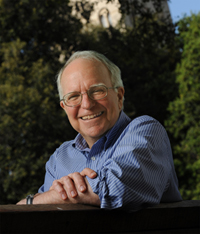

Research
BPEA | 1974 No. 2

1974, No. 2
CHANGES IN AGGREGATE demand are the fundamental source of changes in the price level. In the long run, the supply of resources determines the volume of real output, the quantity of money determines the nominal value of output, and the price level is the ratio of the two. Economists who disagree with Milton Friedman’s famous dictum that “inflation is everywhere and always a monetary phenomenon” have doubts mainly about the mechanism linking monetary expansion to inflation. Underlying my discussion of the role of labor markets in the process of inflation is the hypothesis that an increase in aggregate demand raises employment and reduces unemployment. The economy then moves up and to the left along the Phillips curve and wages start to rise more rapidly. Finally, prices rise in the face of increasing costs. If aggregate demand is stabilized at the new, higher, level, the economy comes to rest with a correspondingly higher wage and price level. The inflationary bulge in real aggregate demand disappears as the process reaches its conclusion.